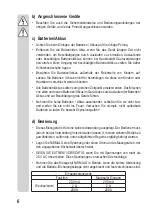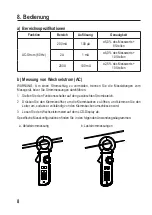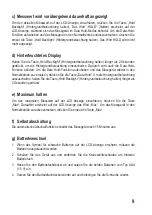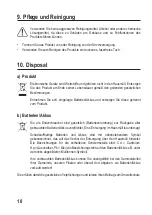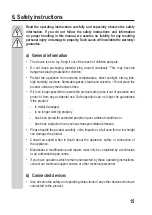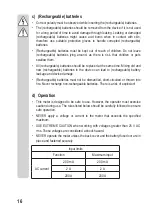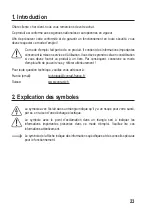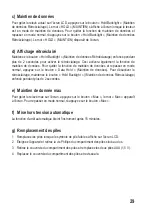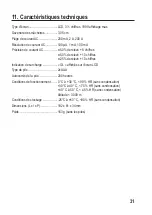
c) (Rechargeable) batteries
• Correct polarity must be observed while inserting the (rechargeable) batteries.
• The (rechargeable) batteries should be removed from the device if it is not used
for a long period of time to avoid damage through leaking. Leaking or damaged
(rechargeable) batteries might cause acid burns when in contact with skin,
therefore use suitable protective gloves to handle corrupted (rechargeable)
batteries.
• (Rechargeable) batteries must be kept out of reach of children. Do not leave
(rechargeable) batteries lying around, as there is risk, that children or pets
swallow them.
• All (rechargeable) batteries should be replaced at the same time. Mixing old and
new (rechargeable) batteries in the device can lead to (rechargeable) battery
leakage and device damage.
• (Rechargeable) batteries must not be dismantled, short-circuited or thrown into
fire. Never recharge non-rechargeable batteries. There is a risk of explosion!
d) Operation
• This meter is designed to be safe to use. However, the operator must exercise
caution during use. The rules listed below should be carefully followed to ensure
safe operation.
• NEVER apply a voltage or current to the meter that exceeds the specified
maximum.
• USE EXTREME CAUTION when working with voltages greater than 25 V AC
rms. These voltages are considered a shock hazard.
• NEVER operate the meter unless the back cover and the battery/fuse door are in
place and fastened securely.
Input limits
Function
Maximum input
AC current
200 mA
200 mA
2 A
2 A
200 A
200 A
16





